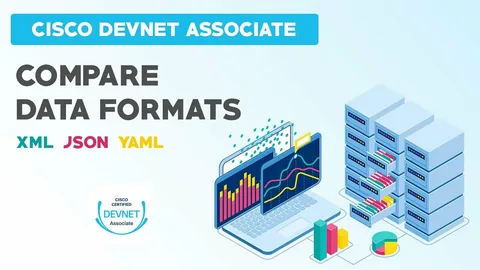Understanding Data Formats: A Comprehensive Overview

In the world of technology and data management, data formats play a crucial role. They define how information is stored, structured, and exchanged between systems. Understanding different data formats is essential for effective data processing, analysis, and sharing.
What is a Data Format?
A data format is a standard way of encoding information in a file or a data stream. It dictates how data is organized, allowing software applications to read and interpret the information correctly. Data formats can be broadly categorized into two types: structured and unstructured.
-
Structured Data Formats: These formats have a defined structure, making it easy to enter, query, and analyze data. Examples include CSV, JSON, and XML.
-
Unstructured Data Formats: These formats lack a predefined structure, making them more complex to process. Examples include text files, images, and videos.
Common Data Formats
-
CSV (Comma-Separated Values)
- Use: Primarily used for tabular data.
- Advantages: Simple, human-readable, and widely supported by spreadsheet applications.
- Limitations: Lacks support for complex data types and hierarchical structures.
-
JSON (JavaScript Object Notation)
- Use: Popular in web applications for data interchange.
- Advantages: Lightweight, easy to read and write, supports nested structures.
- Limitations: Can be less efficient for large datasets compared to binary formats.
-
XML (eXtensible Markup Language)
- Use: Used for data representation in web services and APIs.
- Advantages: Highly flexible, supports complex data structures, self-descriptive.
- Limitations: More verbose than JSON, leading to larger file sizes.
-
YAML (YAML Ain't Markup Language)
- Use: Often used for configuration files.
- Advantages: Readable and supports complex data structures; less cluttered than XML.
- Limitations: Parsing can be error-prone due to its reliance on indentation.
-
Parquet
- Use: Designed for big data processing.
- Advantages: Columnar storage format, efficient for querying large datasets, reduces storage space.
- Limitations: Less human-readable compared to text formats.
-
Avro
- Use: Used in data serialization, especially in Hadoop ecosystems.
- Advantages: Supports schema evolution, efficient binary serialization.
- Limitations: Requires a schema definition, making it less flexible for ad-hoc usage.
-
Binary Formats (e.g., Protocol Buffers)
- Use: For high-performance applications requiring efficient data transmission.
- Advantages: Compact and fast; ideal for network communications.
- Limitations: Not human-readable; requires specific tools for encoding/decoding.
Choosing the Right Data Format
The choice of data format depends on several factors:
- Nature of the Data: Structured vs. unstructured data.
- Performance Needs: Speed and efficiency in data processing.
- Compatibility: Support across various platforms and applications.
- Readability: The importance of human-readability for collaboration or debugging.
Conclusion
Data formats are fundamental in ensuring that data can be efficiently stored, shared, and analyzed. By understanding the characteristics and use cases of various data formats, organizations can better manage their data, optimize workflows, and enhance interoperability between different systems. As technology evolves, new data formats will continue to emerge, further shaping the landscape of data management.
- Arts
- Business
- Computers
- Jogos
- Health
- Início
- Kids and Teens
- Money
- News
- Recreation
- Reference
- Regional
- Science
- Shopping
- Society
- Sports
- Бизнес
- Деньги
- Дом
- Досуг
- Здоровье
- Игры
- Искусство
- Источники информации
- Компьютеры
- Наука
- Новости и СМИ
- Общество
- Покупки
- Спорт
- Страны и регионы
- World


